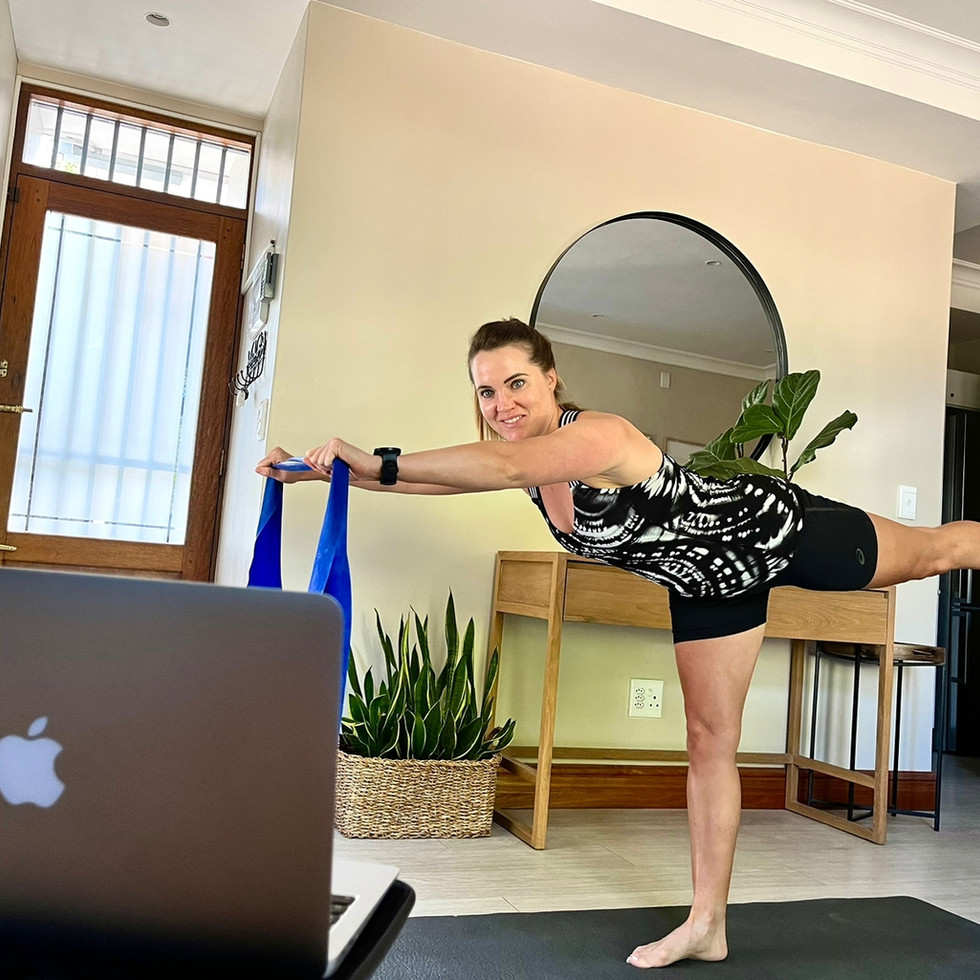Is there such a thing as a 'Pilates Body' and if so, what is it?
- Chi Ingledew
- Mar 20, 2023
- 4 min read
After a year of ill health and not doing much cardio due to a knee injury, my body started to change (obviously) and I began to think of myself as “chubby” and a critical thought popped into my head. As I stood in front of a Pilates class I caught myself thinking, “I am a Pilates Instructor and I don’t even have a Pilates body”. With a very critical and careful look at what defines a “Pilates body” (besides the fact that I never believed I embodies the ideal marketed Pilates body in the first place), I started to question what it really means to have a “Pilates Body” and is there an ideal? In addition, how am I using my language and how are my clients using theirs and what can I do to make this dilemma less of a dilemma? It is by no means, a new topic of discussion but I believe there is a place to re-address such a topic.
It is important to begin by stating that this is not necessarily a 'Pilates dilemma' but a societal one that we have created. Roxy Memzies states that “Under the umbrella of this perceived ‘Pilates Body’ lies not only a society outside of the industry that promotes discrimination and self-loathing (under the guise of optimal health) but much much more. It’s not as simple as fat vs. thin; it’s about gender inclusivity, sizeism, the hierarchy of Pilates lineage, ableism, harassment, trauma, fatphobia, and mental health.” Most of our Pilates top leaders continue to feed into this unrealistic ideal and are not necessarily quick at recognising their own limiting beliefs and opening up inclusivity, and or change. I encourage us all, to look at our own belief systems and use of language and then work on changing our thought processes and challenging those around us to do the same.
To do pilates you need to have a body and DO Pilates. It’s actually quite simple. Pilates is for every single body. Pilates is for EVERY-BODY, regardless of your gender, age, race, size, ability, or current fitness level. We all have imbalances and we all need re-education and re-training in our bodies (and our minds for that matter). If Pilates is about mind, body, and spirit, why is the Pilates industry fixated primarily on the body? We put too much emphasis on looking great rather than feeling great! Let’s remember that Pilates itself isn’t biased, the work of Pilates is for everyone, but rather it is us as humans that are biased and have created this exclusive environment. This means that we have the power to make these changes, even if only small.
When observing a google search on “What is a Pilates body” - I came across 'long and lean' skinny white girls with strong-looking abdominals or long and lean like a dancer’s body (which is also quite ridiculous as dancers also come in many shapes and sizes!). Nevertheless, I was certainly shocked to see what was still being described as an elitist's Pilates body. These types of assumptions are not only false representations and offensive, but it shows there is a lack of understanding about the human body and Pilates for that matter. Roxy Memzies continues, “The Pilates industry is historically known as exclusive with a reputation of elitism, which still remains today. Even though instructors cite and like to believe Pilates is for everybody, everything from marketing, division within the community, clothing and even training programs say otherwise. And yes, that isn’t the entire industry, as there have been Pilates teachers and enthusiasts boldly striving to change the status quo. However, as a majority, we are still creating barriers that exclude, and promote shame, anxiety, trauma, and unhealthy behaviours.” For a moment, as a Pilates Instructor or a Pilates-goer think about what small changes you can make to our society for it to be just a little bit more healthy.
One way that our (Pilates) culture can make some changes is the mentality around "fixing people". James Crader made an incredibly valid point and stated that “(this) requires clients to assume/admit/want to be broken to value fixing. What if the Pilates culture, and specifically the studio culture, was where any BODY could come to experience a safe space to learn, explore, play and ask questions about their felt experience and relationship with movement? How would that shift how you work? How would that shift the Pilates culture? If instead of being the modality that fixes broken people, it was the movement culture founded on creating safety and curiosity. What would it then mean to have a Pilates Body? How would that messaging show up throughout the Pilates industry?” Pilates studios need to foster a safe environment for people to connect not just with their bodies but also with their minds. This allows everyone to take full responsibility for who we are as individuals, what journey we are on and the changes that need to be made in body and mind. And so, the power lies from within - we can make the change. As Pilates Instructor, I aim to empower my clients and create room for their own growth in body and mind.
We are here to celebrate the work - mind, body and soul - EVERYbody. If those of the Pilates community believe themselves to share Joseph Pilate's vision of wanting the whole world to do his exercises then it is imperative that there is an equal representation. Joseph Pilates made it known that the most important aspect of his movement is an optimal physical and mental function for a long and pleasurable life.
This blog was inspired by: Roxy Menzies writing which can be retrieved at: https://www.pilatesanytime.com/blog/more/what-is-a-pilates-body










